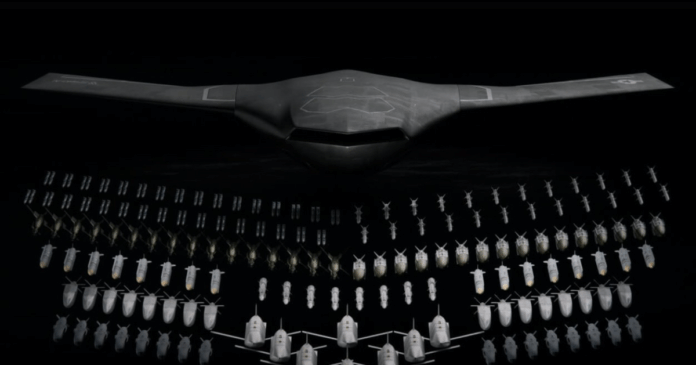It seems like autonomous aircraft makers are indulging in a bit of oneupsmanship as Shield AI rolls out its X-BAT VTOL Collaborative Combat Aircraft (CCA) that combines the ability to land and take off without a runway with long-range endurance.
Autonomous drones with the flight performance of fighter aircraft that can team with piloted fighters are becoming more common, with two prototypes officially classified as combat aircraft by the US Air Force. That’s not surprising, given that such CCAs hold the promise of acting as force multipliers that turn human fighter pilots into mission commanders and make possible missions that would perviously have been too dangerous to even consider.
Now, Shield AI is upping the ante with X-BAT. Based on the company’s smaller, propeller-driven unmanned V-BAT drone, X-BAT was revealed on October 22, 2025 in Washington DC before an audience of military leaders, elected officials, and industry partners. For the company, this represents an expansion into larger aircraft – specifically, Group 5 drones, which are the heaviest group, weighing in at over 1,320 lb (599 kg).
X-BAT
The X-BAT is conceived as a combat VTOL drone that can fly in contested areas that suffer from jammed communications and other electronic warfare measures. In addition, its ability to land take off and land vertically allows it to operate without relying on runways. In addition, its long range of over 2,000 nautical miles (3,704 km/2,300 miles) makes it less dependent on logistical pipelines, making it suitable for backcountry sites, islands, and ship decks.
The X-BAT isn’t very large, with its cranked kite wings spanning only 39 ft (12 m) and a fuselage length of 26 ft (8 m) – the company claims that when it sits on end it has a smaller footprint than three conventional fighter jets. Mind you, this is offset by the size of its launch and recovery transporter.
Shield AI’s proprietary AI Hivemind software serves as the brains of X-BAT and allow it to carry out complex tactical maneuvers as well as team with piloted fighters and collaborate autonomously with other drones, even when radio communications and GPS aren’t available.
Shield AI
X-BAT’s power plant is described as an F-16 engine. This means that, if it has an afterburner and the fuselage and control systems are compatible, it might be able to reach speeds of up to Mach 1.2 – very fast for a CCA. The lines of the aircraft and wing geometry show a heavy emphasis on stealth. To cut its radar signature as low as possible, there is an internal weapon bay, though there are also hard points to mount weapons externally if the X-BAT is in “beast mode.”
Shield AI says that X-BAT has been in development for 18 months and its first VTOL flight is scheduled for later this year, with deployment estimated in 2028.
“X-BAT is a revolution in airpower because it combines four things – VTOL, range, multi-role capability, and autonomy,” said Armor Harris, senior vice president of aircraft at Shield AI. “VTOL plus range solves survivability on the ground and dependency on tankers. Multirole provides critical flexibility as the threat evolves, because no plan survives first contact with the enemy. X-BAT’s ability to autonomously operate standalone or collaboratively allows it to project power when other assets aren’t around and simplifies kill chains.”
Source: Shield AI


